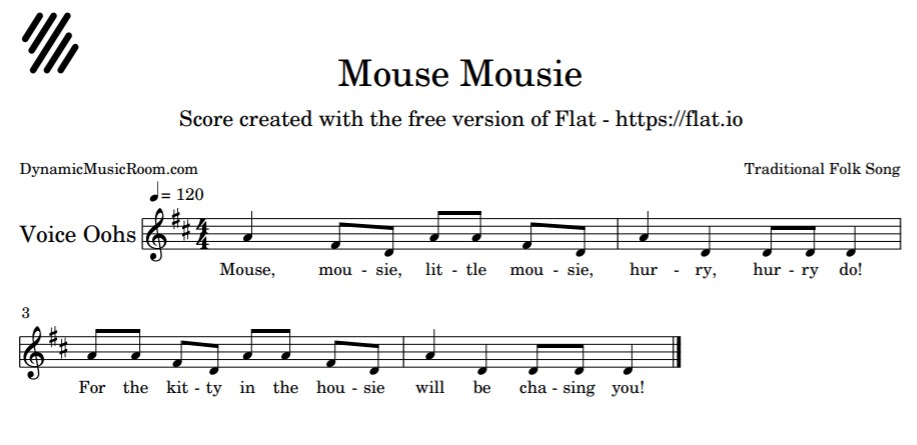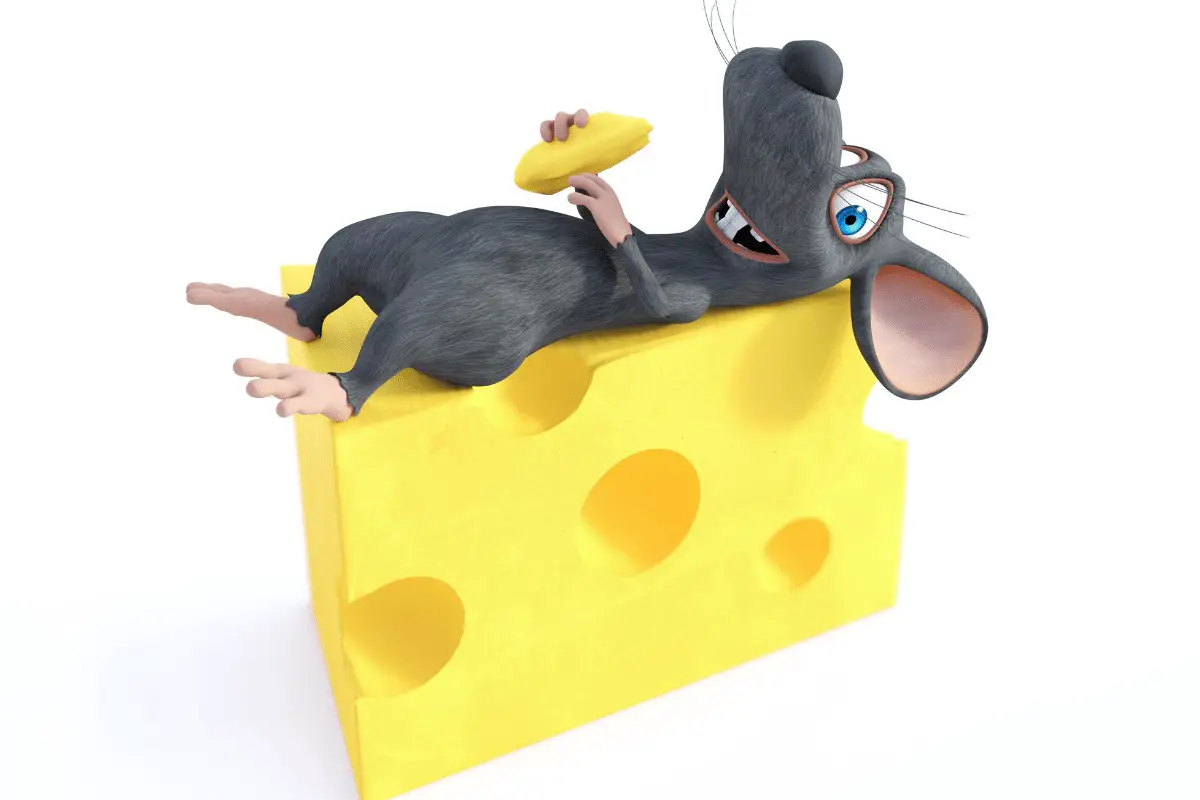I’m always looking for songs to teach specific concepts, and some of the hardest ones to find feature the major triad or do-mi-sol.
Of course, you want the song to also be a ton of fun for your second graders, right?
The Mouse Mousie song is one such tune, and I’ve loved using it these best 10+ years teaching elementary music.
Look ahead for the sheet music, game, and hints about the origin of the song.

Save time with these 60 FREE Music Resources to use in your room right away!
Stop searching the whole internet to find good activities. I’ll help you cut to the chase with my favorite 60 FREE resources.
Table of Contents
Mouse Mousie Sheet Music [Easy To Read!]
Here is the sheet music for you to look at. Feel free to share as long as you link back to the Dynamic Music Room.
As the breakdown or folk song analysis shows after the sheet music, this is the perfect song to teach Do.
The rhythms are simple, so they won’t distract from the new concept. And the game (described later) is a ton of fun.

Where I First Heard It: At my Kodaly Level I training with Dr. Joy Nelson.
Grade Level: Second grade
Type: Chase Game
Tonal Center: Do
Range: Perfect 5th
Tone Set: D m s
Rhythm Set: Paired eighth notes, quarter note
Form: ab
Suggested Key: D Major
Pitch Focus: Do
Rhythm Focus: quarter vs. eighth notes
Mouse Mousie Game Explained
The game is a Chase-style game, one of the favorites I play with my kids.
All students sit in the circle, except for one.
One student is out on the side and faces the wall or closes their eyes. They are the “cat.”
While the cat is looking away, you pick the “mouse” or secret student.
The cat turns around and walks around the circle while the class sings the melody.
The mouse jumps up and runs around the circle at the end of the song. The cat tries to tag them before they make it all the way around and back to their original spot.
If the cat tags the mouse, they win. If the mouse makes it back, they win.
What happens when you win? Nothing, it’s just fun to play the game.
Then, you pick a new cat, or the mouse becomes the cat, and you play again.
Pro-tip: To avoid a stalemate where the students end up on opposite ends of the circle without moving, make it a rule that they can only move clockwise.
Finger Play
A version of this song exists as a finger play or nursery rhyme game.
You probably wouldn’t want to play the exact game in school since it involves tickling, but it’s workable for Kindergarten or Preschool if you adapt it.
Look at this chart for how this works:
| Lyrics | Move |
|---|---|
| Mouse, mousie little mousie | One hand flat while the other walks on top of it |
| Hurry, hurry do | Fingers walk quickly on their hand |
| For the kitty in the housie | Flat hand turns into two fingers up like cat ears |
| Will be chasing you! | Tickle! |
Mouse Mousie Source And Origin
The origin of the song Mouse Mousie is a little unclear.
If anyone has any other information or resources, please feel free to email me at dynamicmusicroomATgmailDOTcom.
One source is in The Kodaly Context by Lois Choksy, but it may be older than that.
Another is from the Orff Source Vol. 1, although this one is more recent.
The song is most likely a composed song, but it’s been around for long enough, it’s considered a traditional folk song at this point.
It’s also possible the tune was adapted from a Hungarian folk song when the Kodaly method was first introduced to America.
Many music teachers took the songs and added English words at that time.
Regardless, this song is a blast to play and works well for teaching Do Mi and Sol.

Save time with these 60 FREE Music Resources to use in your room right away!
Stop searching the whole internet to find good activities. I’ll help you cut to the chase with my favorite 60 FREE resources.

